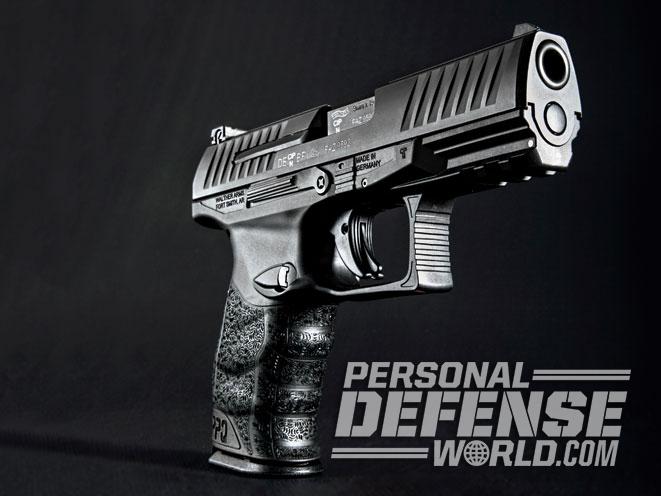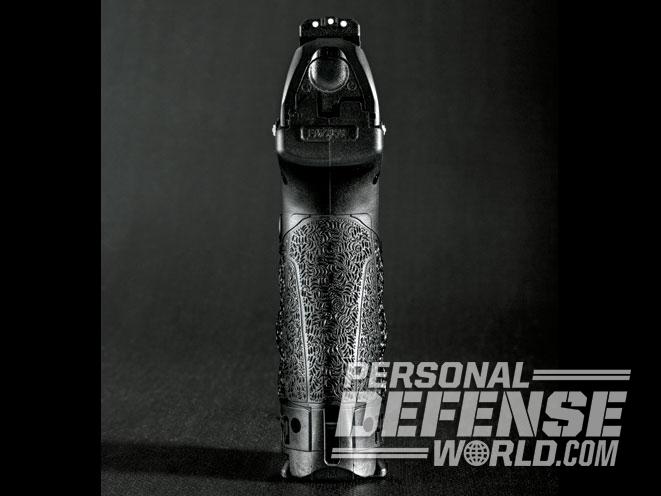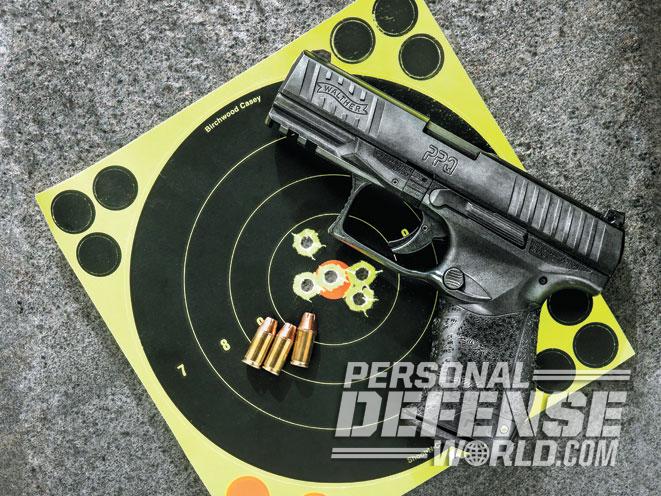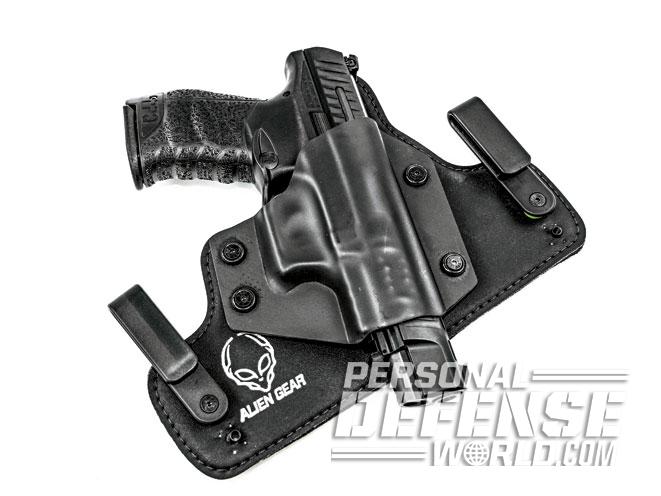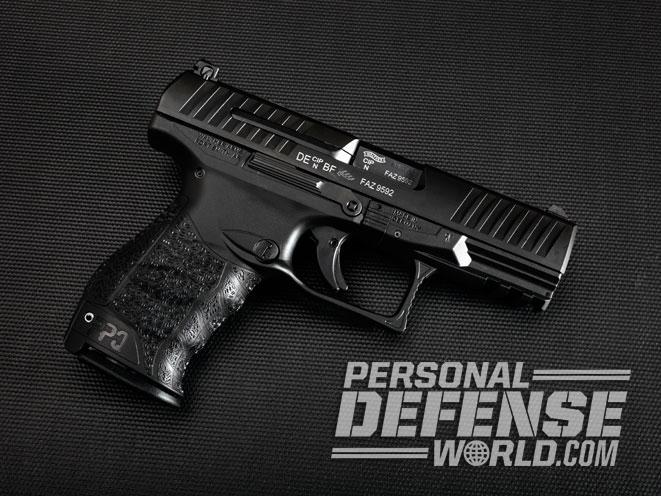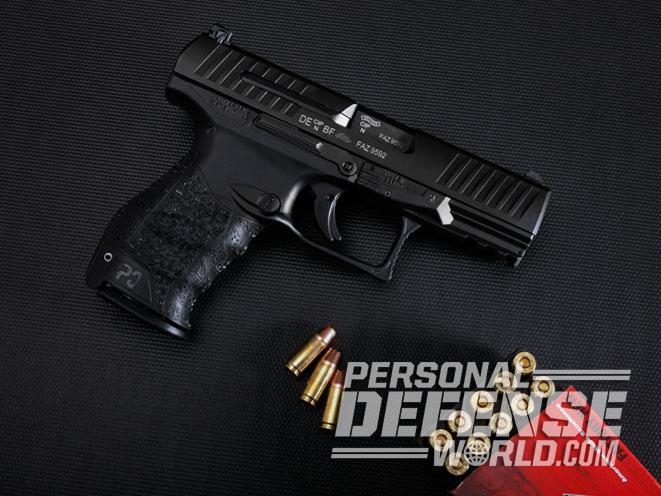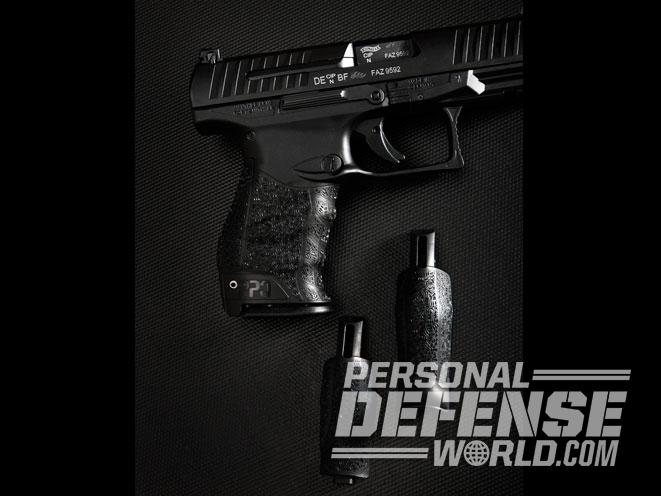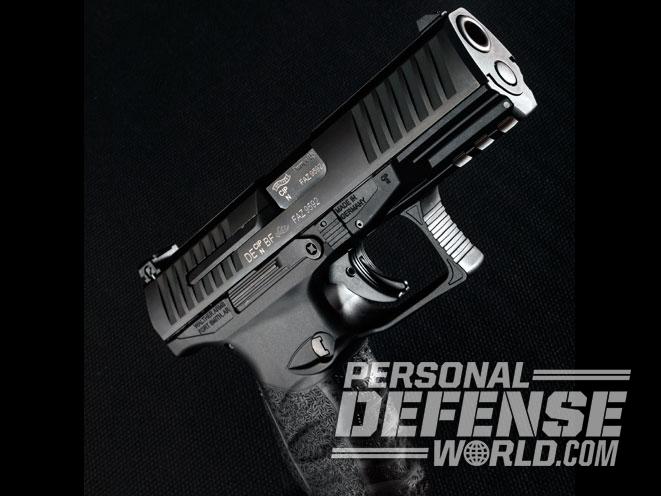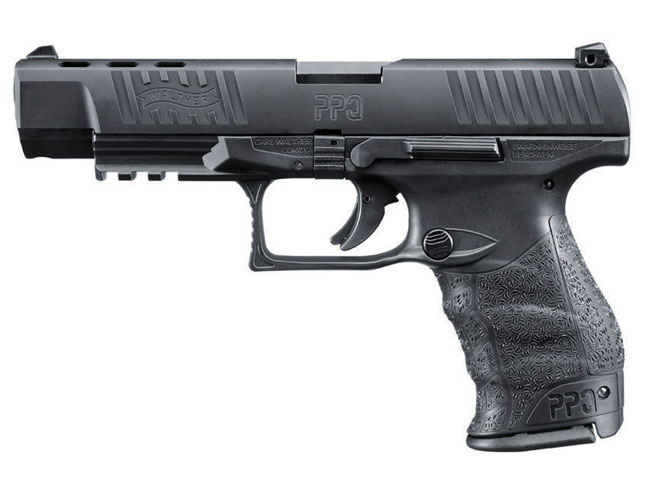The successor to Walther’s original PPQ (Police Pistol Quick Defense) pistol, the PPQ M2, has a lot to offer handgun enthusiasts. While retaining the quality and features the PPQ offered, the PPQ M2 incorporates some design changes that make it even more shooter friendly.
The most noticeable difference is the magazine release. On the PPQ, this consists of a pair of European-style, paddle-shaped releases inset in the lower part of the triggerguard. In response to American demand, Walther has changed this to a button-type release conventionally located at the left-rear of the trigger. This release can be switched to the starboard side to accommodate southpaws.
While the PPQ M2 has barely noticeable molded ridges extending from the rear of the triggerguard, the original PPQ lacked this adornment. These ridges help prevent the magazine-release button from being accidentally activated and ejecting the magazine. Because of changes in the magazine-release location, the two guns have slightly different internal configurations. The magazines themselves are not interchangeable between the two guns. The PPQ M2 comes with two 15-round magazines and a speed loader. Witness ports on the rear of the slide allow you to see how many rounds remain in the magazine.
Advertisement — Continue Reading Below
At last look, extra magazines were relatively costly and not easy to come by. I expect this to change as the gun deservedly gains new fans. When the gun has a cartridge chambered, a small red indicator appears at the upper rear of the starboard slide-release lever. In addition to releasing the slide when activated, it can also be used to lock the slide open by pressing upward on the lever.
Striking Nine
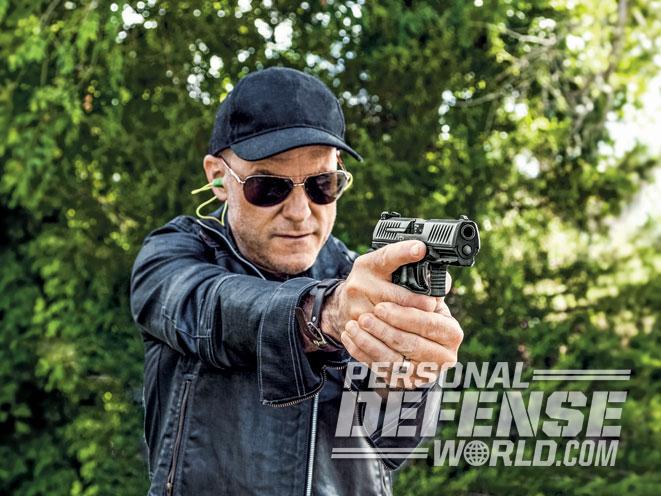
Advertisement — Continue Reading Below
The polymer-framed PPQ M2 gun is striker-fired. Except for its trigger safety, the 9mm PPQ M2 has no external safeties. An internal firing pin safety and two drop safeties help prevent accidental discharges. There’s no magazine safety. If there’s a cartridge in the chamber, the gun can be fired after the magazine is ejected. With no manual safeties to actuate, the gun is ready to go the second it leaves the holster. That’s a very desirable feature on a pistol intended for personal defense.
RELATED STORY: A Look at the Smooth-Handling Walther PPQ M2
The pistol’s excellent trigger operation is by far the PPQ M2’s best feature. After a 0.4-inch take-up, the trigger trips crisply at 5.25 pounds. After the gun fires, the trigger has a short 0.1-inch reset, making rapid, accurate follow-up shots a cinch. As the trigger resets, it emits an audible “click,” announcing that the gun is once again ready for firing. There’s no better choice than the Walther PPQ M2 for controlled double-taps. All rounds are fired single action (SA), as there’s no double-action (DA) mode on this Walther firearm.
Advertisement — Continue Reading Below
The Walther’s ergonomics are also excellent. The grip has barely noticeable finger grooves and a hand-gripping surface that features an interesting pattern of shallow swirls. These swirls are less abrasive than standard checkering, but they do a great job of keeping the gun firmly in your hand. There are also palm swells on either side of the grip, which aid in control and recoil management. The rear of the grip extends below the magazine well, which helps guide a fresh magazine into place. While the gun has a double-stacked magazine, it doesn’t feel bulky or awkward to hold.
Smooth Operator

Without a doubt, the 9mm PPQ M2 is positively gentle on your hands, whether you’re a burly shooter tipping the scales well north of 200 pounds or a diminutive woman with smaller hands. Extended firing sessions are easy to take. Recoil isn’t a problem, as the gun quickly returns to firing position.
Advertisement — Continue Reading Below
Walther provides three interchangeable backstraps, allowing you to custom fit the gun for the feel that suits you best. The roll pin anchoring the backstrap is pressure fit, and it requires the proper roll-punch tool before you can swap backstraps around.
I chose to use the medium-sized backstrap that came installed on the gun. It fit my hand beautifully, and was curved at the top to allow a high grip. With this backstrap in place, my wrist was nicely aligned with the bore of the gun. This helped to quickly bring the gun back in line during rapid shooting. The other provided backstraps (small and large) should accommodate almost any shooter’s hand.
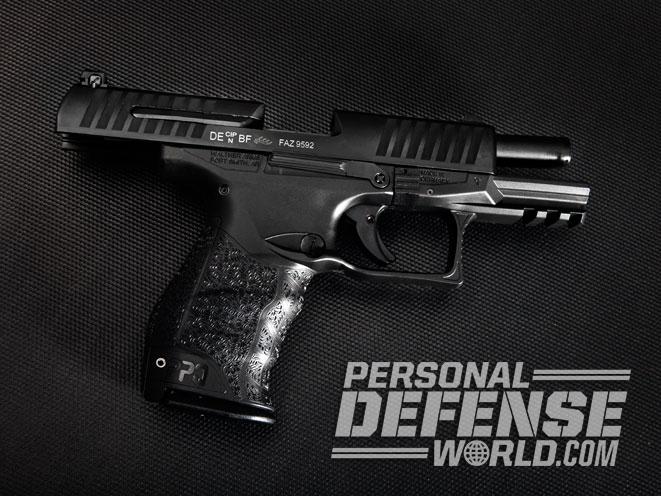
Advertisement — Continue Reading Below
The slide release consists of a pair of narrow levers on either side of the frame. These levers can be actuated by your thumb or trigger finger. The robust extractor is located on the starboard side of the slide, while the generously proportioned ejection port allows expended hulls to cleanly clear the gun.
RELATED STORY: Exclusive Video – The Ultra-Compact Walther PPS 9mm Pistol
Takedown is very similar to dismantling other polymer-framed pistols. The slide can be dismounted by simply pulling down the release catch immediately forward of the trigger, then moving the slide forward and off the frame. This allows the barrel and recoil spring to be easily removed for cleaning. The PPQ M2 utilizes Browning’s tilt-barrel design, making disassembly simple and straightforward.
Advertisement — Continue Reading Below
The PPQ M2 weighs just 24 ounces with an empty magazine in place. In addition to paring heft, the gun’s tapered, streamlined slide avoids the “blocky” appearance associated with other polymer-framed guns. I find the PPQ M2’s sculptured appearance much more appealing than a typical squared-off silhouette. The slide has serrations fore and aft to assist with cocking.
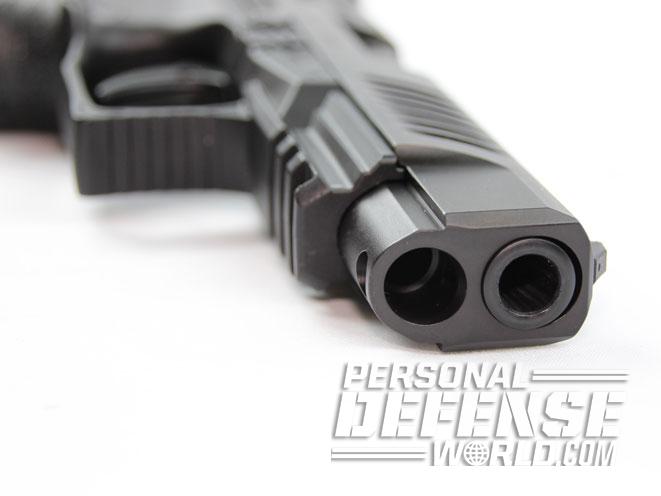
Both barrel and steel slide are Tennifer coated. This treatment does a remarkable job of resisting wear and corrosion. The gun sports low-profile, three-dot sights, with the rear sighting notch large enough for fast acquisition. The rear sight is adjustable for windage, while the front sight can be replaced to make changes in elevation. The sights are designed to avoid snagging in clothing.
Advertisement — Continue Reading Below
A Picatinny rail underneath the muzzle allows high-intensity lights or laser sights to be easily installed. Both would be great additions if you plan on using the Walther as a home defense gun in a darkened room, but these additions can also make convenient holster carry problematic.
The forward part of the triggerguard is slightly concave and has a serrated face. This provides a natural place to rest your off-hand finger when firing from a two-handed hold. It helps steady the gun as you shoot. The triggerguard itself is easily large enough to accommodate a gloved index finger.
Range Workout
Advertisement — Continue Reading Below

The gun feels great in hand and points naturally on target. It is also extremely reliable. The first time I fired it, the PPQ M2 chewed through 250 rounds of mixed ammunition without a single hiccup. That’s exceptional performance from a gun fired straight out of the box with no break-in period.
RELATED STORY: 4 Walther Pocket Pistols For Concealed Carry Protection
The Walther PPQ M2 is manufactured in Germany to tight tolerances. The extensive user’s manual covers everything in detail about virtually anything you need to know about the gun’s operation. While my test PPQ M2 came with the standard 4-inch barrel, a 5-inch-barreled version is available. A .40 S&W version of the 9mm variant I tested is also available.
While I quit counting after those initial 250 rounds I put through the gun, the Walther PPQ M2 continued to function flawlessly. Reliability is a prerequisite for a combat handgun, and the PPQ M2 delivers!
For more information, call 479-242-8500 or visit http://www.waltherarms.com.
